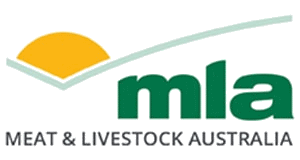MLA to work with industry and Australian Government to navigate US tariff regime
03 April 2025
Meat & Livestock Australia has outlined its commitment to navigating the challenges posed by the United States, following the announcement of a baseline 10 percent tariff on all Australian goods imported into the US.
MLA Managing Director, Michael Crowley, said that MLA and the industry had already been working on this issue throughout 2025 with the formation of an industry taskforce and collaboration and communication with the Australian Government.
He said that the role of MLA was to grow global demand for our beef, sheepmeat and goatmeat by:
- supporting improved access to global markets
- developing more markets alongside commercial partners
- promoting Australian red meat’s strong attributes as a guaranteed safe, healthy and delicious product
- creating demand with high impact in-country marketing campaigns.
“US tariffs will impact the prices paid by American families and may have flow on impacts on the supply chain. It is unlikely these changes will make a difference to retail prices here in Australia,” Mr Crowley said.
The US announcement cited concerns with a lack of access for US beef imports to Australia. There is currently no ban on US beef exports to Australia. Nor is there is a ban on Australian red meat exported to the United States.
Australia has completed science-based biosecurity and food safety assessments that would allow the trade of US beef from cattle born and raised in the US.
However, the US has also asked for access to Australia for beef from cattle raised in Mexico or Canada and processed and exported from the US. This revised request is undergoing the normal Australian science-based assessment to protect our biosecurity.
MLA pointed out that Australia continues to respond to strong demand for high-quality red meat globally, exporting record amounts in 2024 to over 100 countries.
“The demand outlook for Australian red meat remains very strong and we maintain favourable market access conditions with over 85 percent of exports covered by free trade agreements,” Mr Crowley said.
In further stimulating this demand, MLA, via its International Markets program, invests in trade and consumer marketing programs along with maintaining an active presence in North America (USA and Canada), Europe (United Kingdom), North Asia (Mainland China, Hong Kong, Taiwan, Japan, Korea), South East Asia (Indonesia, Singapore, Thailand, Vietnam, The Philippines and Malaysia), and the Middle East (UAE and Saudi Arabia).
The US was Australia’s largest red meat export market in 2024, worth A$6.07B, and accounted for almost one third of Australia’s total global exports. This trade has been underpinned by the Australia-United States Free Trade Agreement, which has afforded Australia a tariff free import status.
“Despite the imposition today of 10 per cent tariff, the US will continue to buy Australian red meat to supplement their requirement for high quality protein,” said Mr Crowley.
Australia’s other major markets include Greater China, Japan and Korea, worth A$3.9B, A$2.6B and A$2.5B respectively. The Middle East / North Africa Market is worth A$2B and offers demand growth opportunities.
Australia is in the early years of the Australia-UK FTA, with improved market access for Australian red meat over a 10-year phase-in period. More recently, the Australia-India ECTA (economic cooperation and trade agreement) eliminated the previous 30% tariff on sheepmeat.
Negotiations have also concluded on the Australia-UAE CEPA (comprehensive economic partnership agreement) which will eliminate tariffs on frozen beef and sheepmeat.
In total 91% of beef, 74% of sheepmeat and 89% of goatmeat exports are covered under existing FTAs which remain effective.
“MLA will continue working with industry to support the wind back of tariffs and to grow market demand globally. The global market outlook remains very strong for Australian red meat,” said Mr Crowley.


